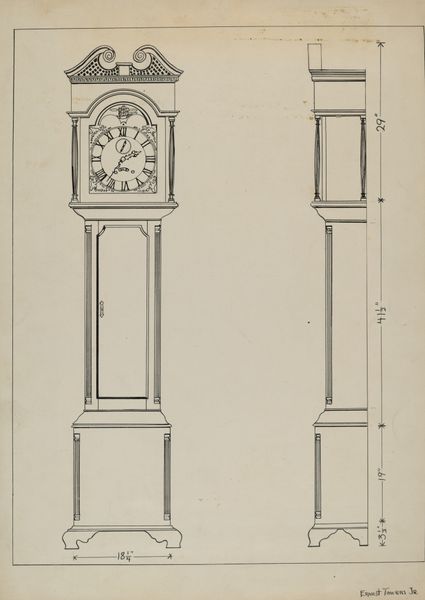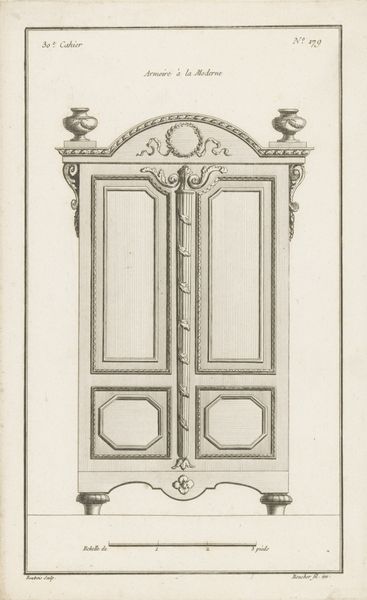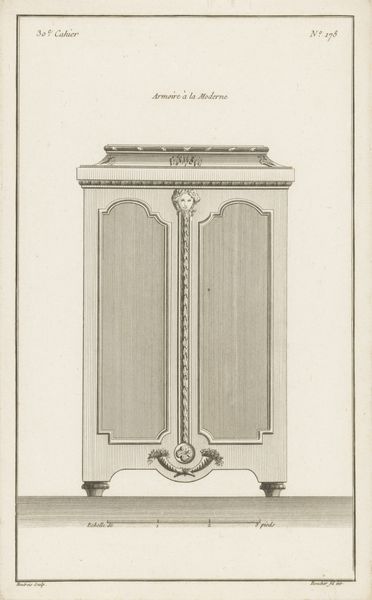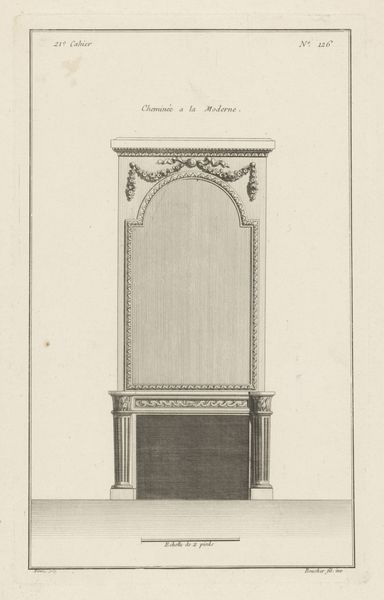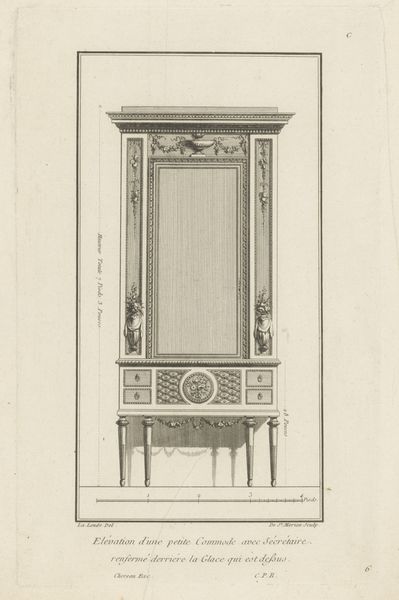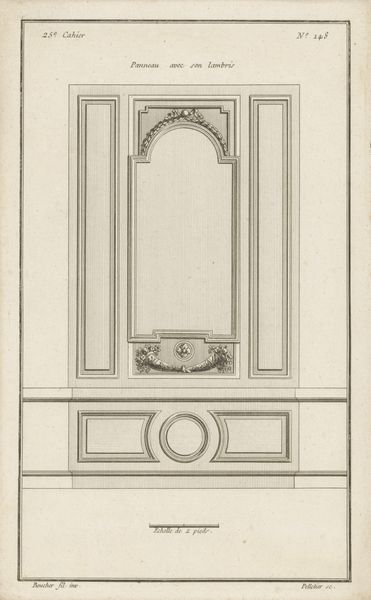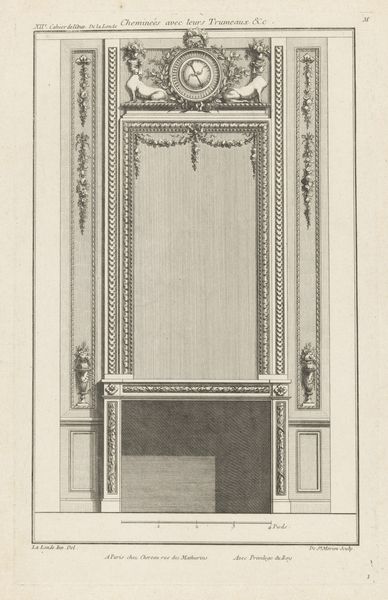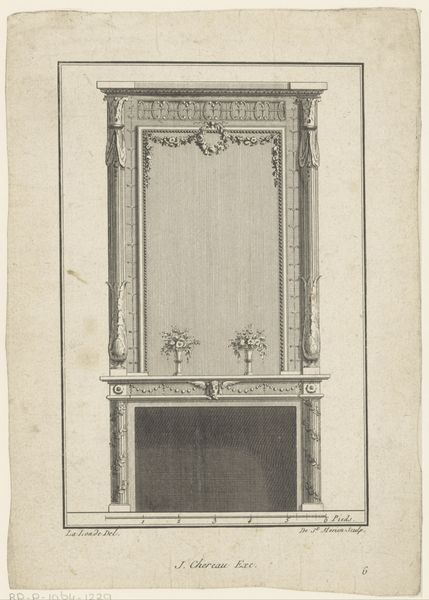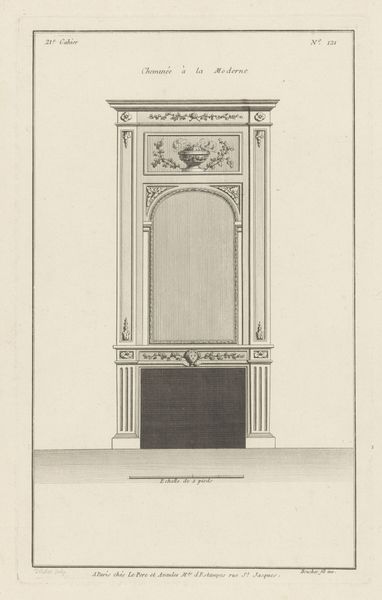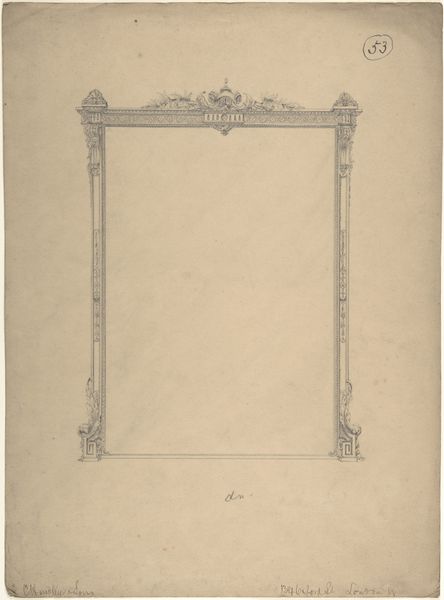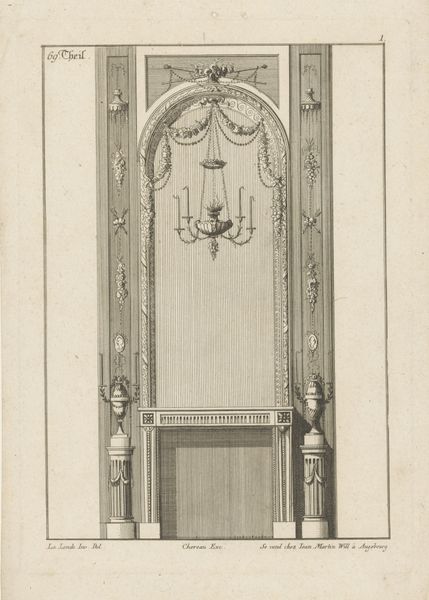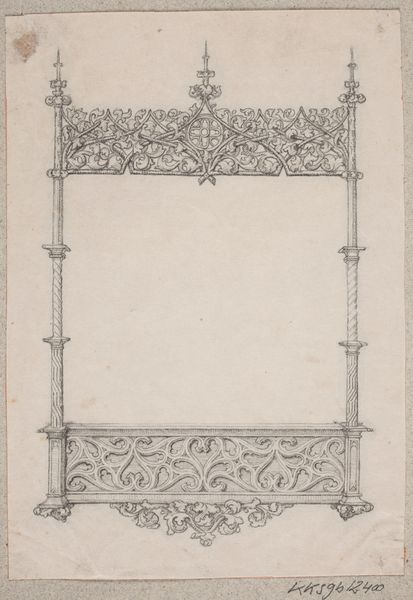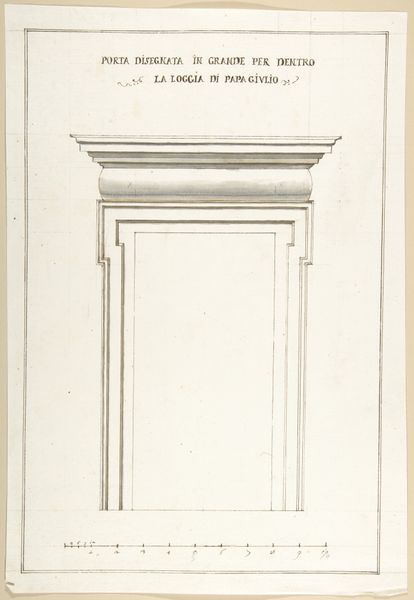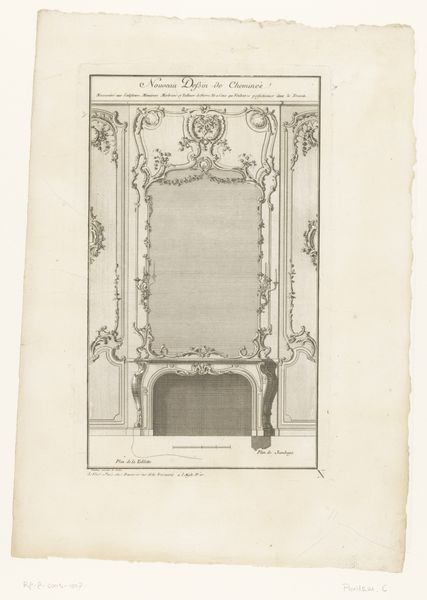
drawing
#
drawing
#
form
#
geometric
#
line
Dimensions: overall: 27.5 x 21.7 cm (10 13/16 x 8 9/16 in.)
Copyright: National Gallery of Art: CC0 1.0
Curator: Nicholas Gorid’s drawing, "Mirror," made around 1936, intrigues me. It’s a meticulous study using line work. What's your initial reaction? Editor: There’s a restrained elegance here. The ornate detailing at the top contrasts starkly with the geometric severity of the mirror's frame. It feels very… contained, precise. Curator: It’s interesting you mention restraint. Consider that the mid-1930s were fraught with economic and social upheaval. Such detailed drawings, with their emphasis on form, were a mode of exploring idealized constructions. Editor: Perhaps. But on a purely visual level, the artist’s precise use of line dictates everything. It almost resembles an architectural rendering, prioritizing form and function. Look how the side view adds to this effect! Curator: Right, he's giving us an orthographic projection. I would argue this isn't merely about pure form though; think about what a mirror represented during that period: self-reflection, yes, but also anxieties about identity during times of social change. Editor: Anxieties made manifest through precision? It's a paradox! It looks like a tree motif in the headpiece. Curator: Yes! Notice how even organic shapes are stylized, fitting within the drawing's larger scheme. It shows how the natural world can be fitted into our human systems of organization. It speaks of the societal pressure for order and structure during chaotic times. Editor: I see that. And I think you have helped me see even deeper than what first appeared when I only saw lines and forms. It’s amazing to observe how historical and social context alters my engagement. Curator: Exactly. The mirror then becomes more than just a drawing, but a vessel of the human desire to construct an ideal even as society feels it's tearing. Editor: Agreed. This has certainly altered my sense of the power behind these meticulous lines. Curator: Absolutely. It serves as a stark reminder of art's profound capacity to be both beautiful in form, yet rooted so heavily in society and political change.
Comments
No comments
Be the first to comment and join the conversation on the ultimate creative platform.
